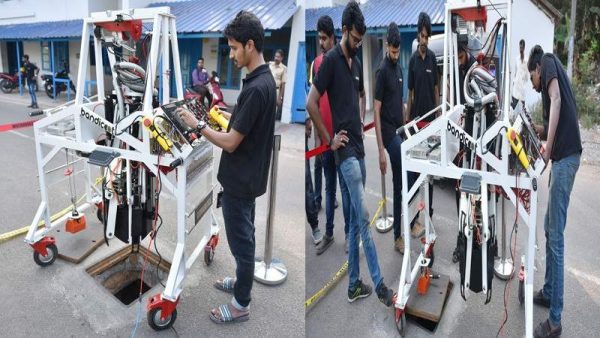
Urban Waste Management: A Discussion
“New Delhi Municipal Corporation (NDMC) has the most difficult population to cater to. But even after that NDMC has been able to come up with various innovations which have improved the situation drastically,” says Jalaj Srivastava, Chairman NDMC.

Jalaj Srivastava, Chief of NDMC
Waste Management and sanitation are an important part our daily lives. Government these days is putting an extra effort to ensure that public is aware about the importance of waste management and sanitation. Swachh Bharat, initiative taken by Prime Minister Narendra Modi, is a step taken in the same direction. On one hand, people know the importance of the situation but on the other hand, they seem not to care. Delhi on an average produces more than a thousand tonnes of garbage every day. Yet, it doesn’t have a proper waste management system. Most of the garbage bins are overflowing. Littering is a common sight. Smelling dustbins are something you could find without much difficulty.

Discussion the urgent matters
Jalaj Srivastava says, “Recycling of solid waste is a major aspect that needs a serious look. We, in Delhi, do have some recycling but it’s not enough. The landfills area need to have a plant where recycling should have a major role to play. The other major aspect is green environment. NDMC has tried to come up with cycling tracks to promote the use of Bicycles. Cycling cultures will sort out quite a lot of problems in the longer run.” He also emphasised upon waste to energy model. Given the amount of waste generated in Delhi, it will be a huge plus if that waste could be used for production of power. Technology is available and a lot of major cities are doing it. 1 tonne of waste could lead to 12 MW of electricity.

D.S. Mishra the philosophy behind sanitation
“Sanitation is linked with various factors. Municipal Corporation of Delhi caters to 94% of Delhi’s area and 96% of the population. The unplanned area constitutes 75% of the city. The drainage systems in these areas are such that sanitation becomes a huge problem. Hence, planning is the way forward”, K.S. Mehra, Former head of MCD.

Jalaj Srivastava, Chief of NDMC
Delhi has 350 Kilometres of natural drains, where water flows with gravity. While the man-made drains are 1700 Kilometres in length the problem is its drainage, which needs to be pumped out regularly. Hence, major part of the drainage system needs human help and proper management. Also, rag pickers play an important role in the system. They pick recyclable waste but there is still a dearth. K.S. Mehra points out that fund for local bodies are transferred at the fag-end of the financial year, which makes the execution of plans really hard. It should be given at much earlier time.
D.S. Mishra, waste management expert, says, “No one wants to live in dirty conditions. So, the question is, why do people live like the way they do. It is because they don’t have proper infrastructure. We are working with various stakeholders at all the levels to sort out the problem. We are also working on waste to energy model, so that waste could be utilised for cities’ purpose. We are also planning to build public toilets.”
Sanitation and waste management is a crucial issue given the urban growth in population. It should be emphasised to get people involved at every level so that the core issue is addressed.








